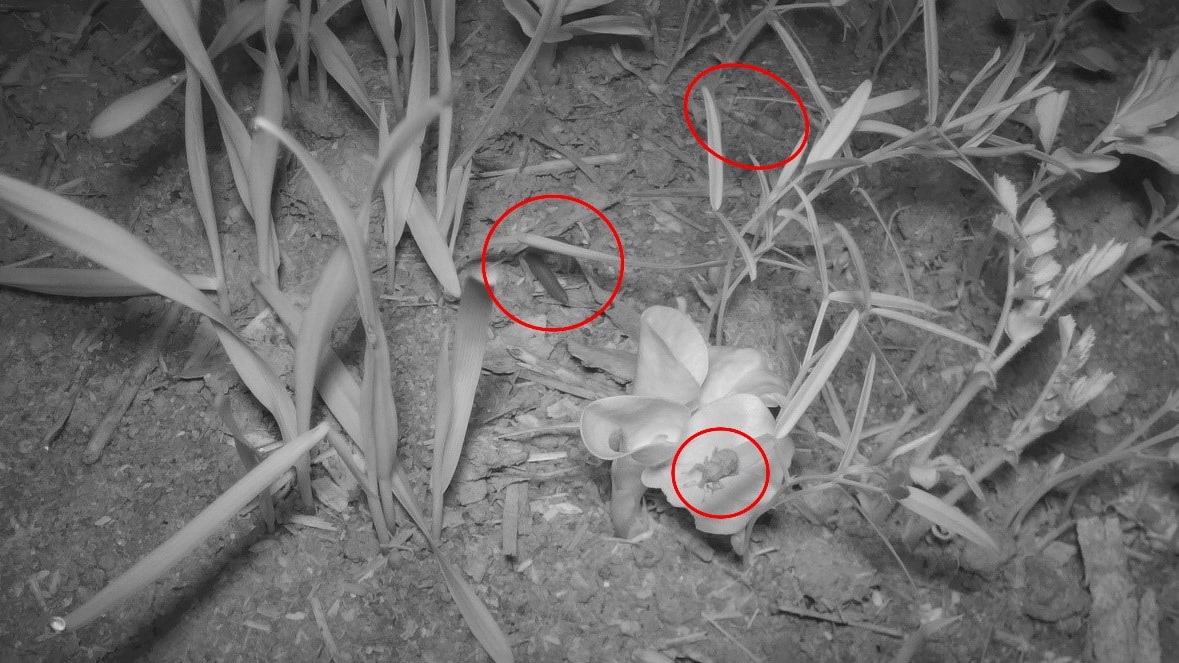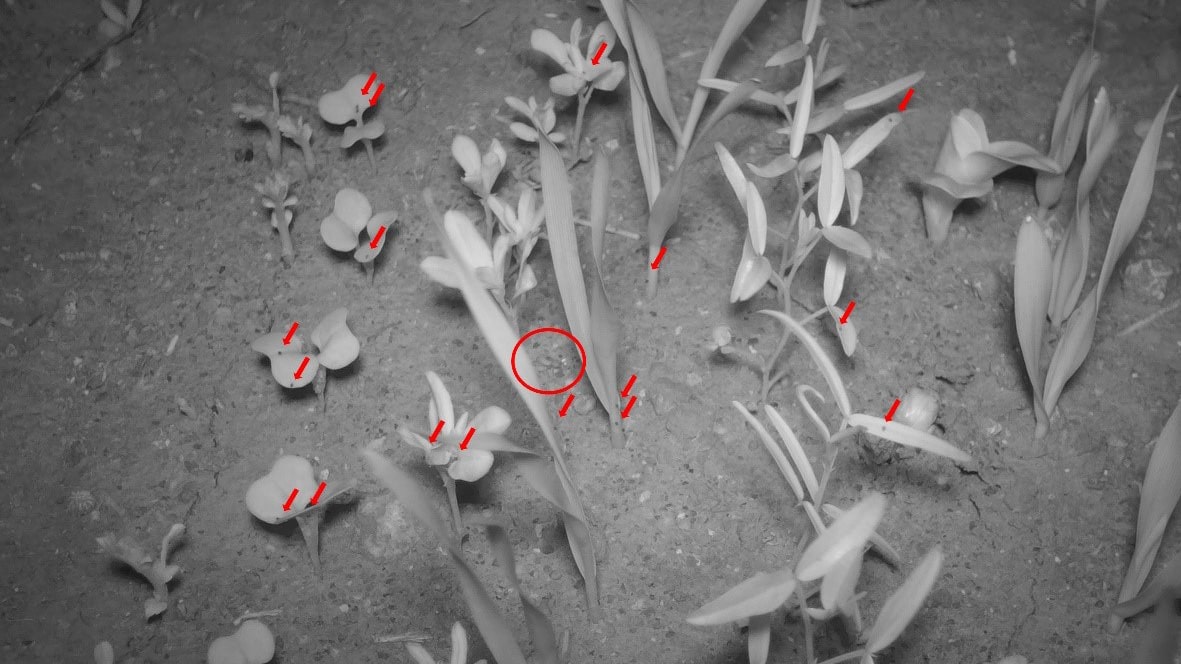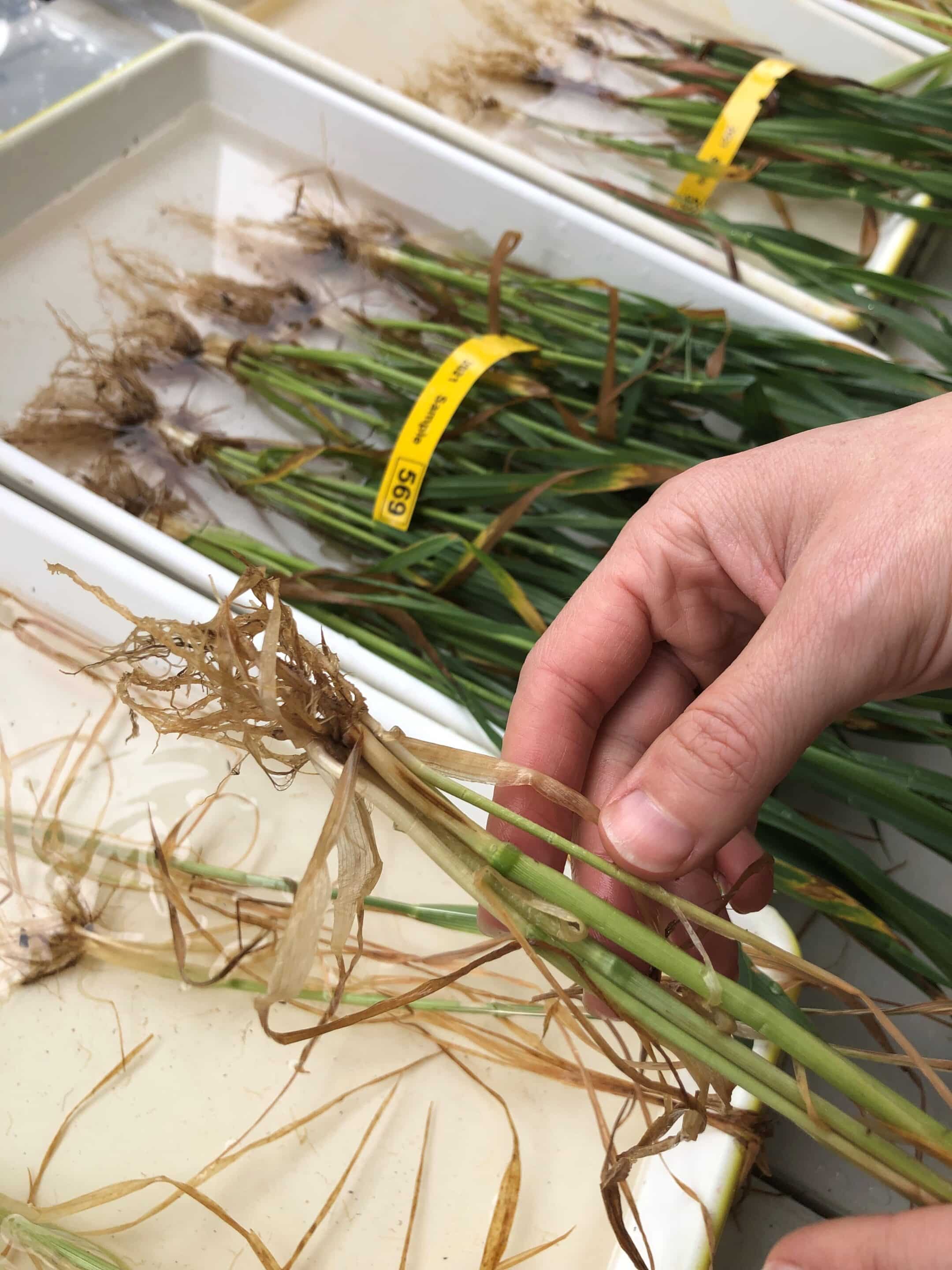START
FINISH

Summary
Understanding which invertebrate species are attacking a germinating crop is important to ensure adequate management and limit any potential damage. Researchers have developed a way to observe invertebrates damaging seedlings at night-time using simple and low-cost technology.
The analysis found that European earwigs were the most prevalent species attacking seedlings, followed by red legged earth mites. High numbers of these combined with a high feeding ratio resulted in crop damage.
Other species like millipedes, slaters, slugs and snails were detected in much lower populations and had a lower feeding ratio, rarely causing significant damage
Background
A range of different invertebrates can attack germinating grain crops. The most commonly blamed are Portuguese millipedes, European earwigs and slaters. Because these are mainly night active and hide underground during the day, there is often no clear evidence which species has damaged the germinating plants.
Experimental studies into seedling damage by invertebrates are often based on small greenhouse experiments using plants in containers with invertebrates added. Prior to this project, there had been no reports of actual direct observation of them attacking seedlings in a field situation.
Research Aims
The core objectives of the project were to:
- Observe seedling damage as it happened in the field to identify which organisms (slaters, millipedes, earwigs or others) damage which crops and under what conditions.
- Quantify the population size, dynamics, possible migration events and life history of European earwigs, slaters and millipedes in broadacre paddocks and surrounding landscapes.
- Develop observation methods and decision rules to help growers adapt management and avoid seedling damage by these organisms in their paddocks.
In The Field
Modified infrared cameras were used to observe the crop invertebrates in six different paddocks across South Australia, before and after sowing, and on seven different crop seedlings – barley, wheat/oat, canola, chickpea, faba bean, lentil and vetch.
A single setup of two cameras, solar panels and batteries, was installed 10m into each paddock. The six paddocks were located in Finniss, Riverton and Rhynie in 2020 and at Reeves Plains, Halbury and Yorke Valley in 2021. Cameras were mounted 30cm above trays of newly germinated seedlings, which were placed level with the surrounding soil and covered with local soil. The cameras took images at one-minute intervals using infrared flash photos.
Pitfall traps were used at various sites within each paddock to trap ground-dwelling insects and determine their movement. Camera footage and pitfall samples were collected fortnightly and the seedlings were replaced on those visits.
The video images were analysed by a time-consuming process of directly observing the images on the screen. A two-week recording period took up to three days to analyse when many organisms were present. A total of 16,645 individual invertebrate observations occurred in the images analysed.
Results
The video analysis showed a different community in each site, and differences between the video and pitfall samples. The most abundant species at each site were earwigs at Rhynie, Finniss and Riverton; millipedes at Finniss and Riverton; red legged earth mites at Halbury; ants at Reeves Plains and slaters at Yorke Valley.
Earwigs were the main invertebrate ‘culprit’ attacking seedlings, showing a high feeding ratio (feeding ratio = feeding events / number of observations) of 63 per cent. Portuguese millipedes showed a relatively low feeding ratio, even when present in high numbers. This could be because they are mostly a detritivore, eating dead plant matter, and therefore might not be attracted to healthy living plants.
The red legged earth mites in Halbury were numerous and damaged the seedlings. Weevils, which are rarely reported for crop damage, were present in higher numbers than expected and were regularly seen attacking crops.
Snails (and slugs) were not present in high numbers in any of the paddocks. Slaters did not cause damage in the paddocks studied. Even with a high population observed, the feeding ratio of slaters was very low.
Earwigs and weevils preferred faba bean whereas red legged earth mites preferred vetch.
Few beneficials were observed, mainly ants, carabid beetles and spiders, with large differences among paddocks.
Further research is required to determine the impact of soil type, preceding crop, chemical history, surrounding landscape, weather conditions and weed communities on invertebrate populations and their appetite for crops.
Project Participants
SARDI: Helen Brodie
SARDI/University of Adelaide: Dr Maarten van Helden
The Problem
A range of invertebrates such as millipedes, earwigs or slaters can attack germinating crops but, because they are nocturnal, it is hard to determine which species is responsible for damage.
The research
New insights into crop damage caused by invertebrates was gained through this project, providing useful data as well as a low-cost technology set-up for future investigations.
More information
Dr Maarten van Helden, SARDI
T: 0481 544 429
E: [email protected]
Value for Growers
The night camera methodology shows the potential to be used more broadly for accurate assessment of invertebrate damage to seedlings.
Importantly, for pest management, it is useful for growers to understand which invertebrates are actually causing damage as those suspected are not always the ones doing the most harm. For example, at one site the cameras revealed no slaters damaging crops and very few millipedes feeding on crops, even though huge numbers of both species were present and there was the incorrect perception that these pests were causing significant damage. Understanding the correct species will enable growers to adapt their approach towards an integrated pest management approach, including monitoring beneficial insects and avoiding pre-sowing wide spectrum insecticides.
The camera set up will be used in other research projects.
Latest Research Projects





